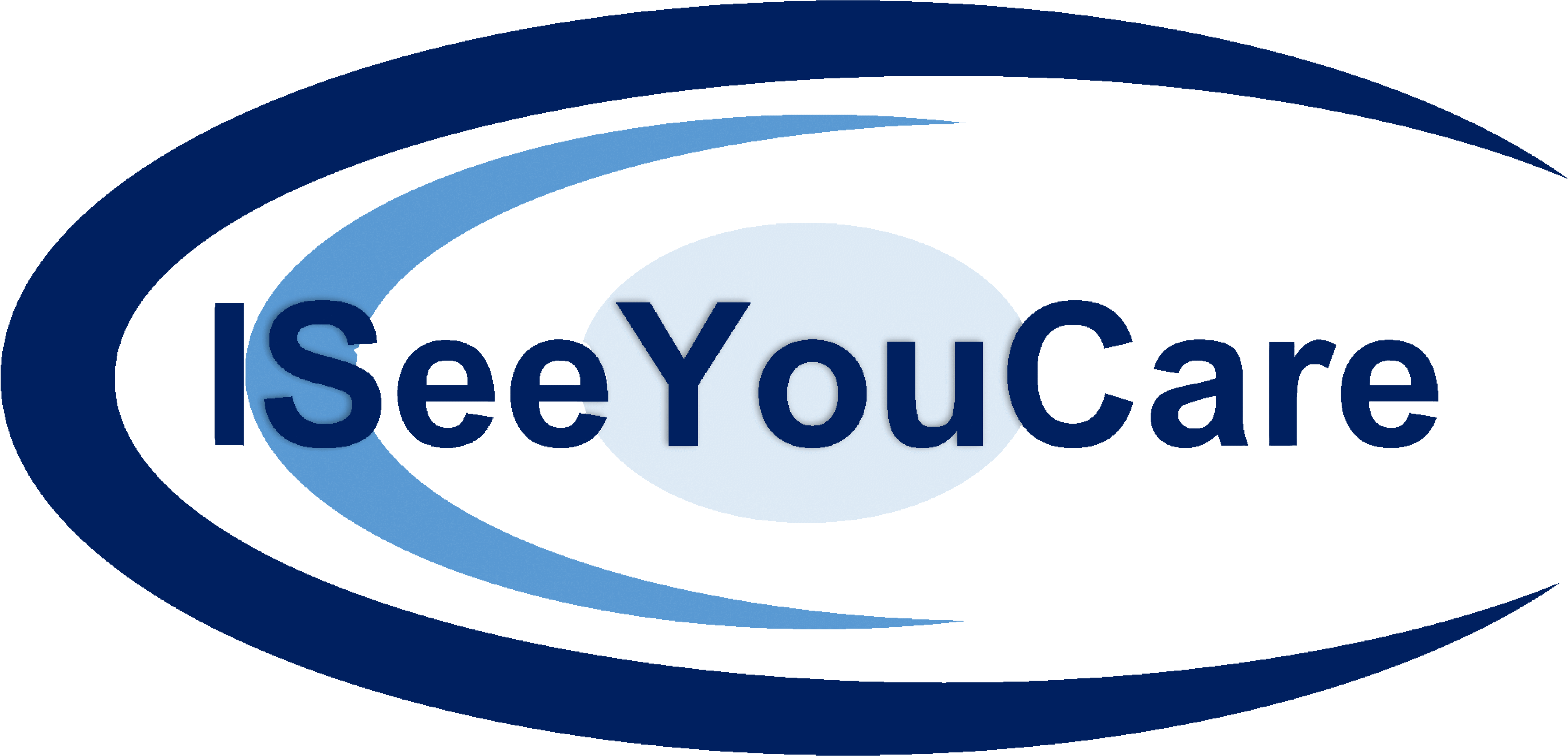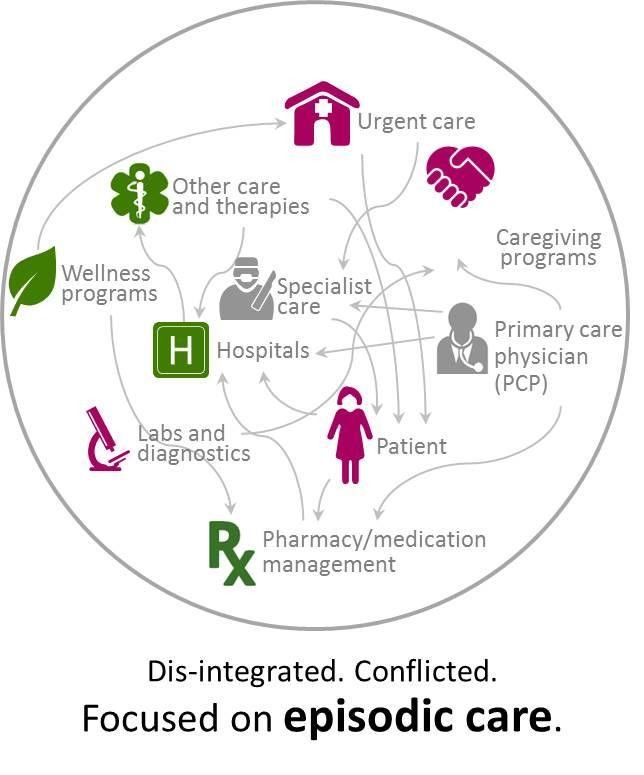In an article for the World Economic Forum, Bruce Broussard, President and Chief Executive Officer of Humana Inc., shares three ways to tackle the Global Health Crisis. We are focusing on one of these in each of three blog posts. The second one is to “transition from volume to value”.
Value-based care is not a new topic by any means. The US Healthcare system has been slowly transitioning over the past two-plus decades. But the traditional pay-for-service model that still defines most healthcare reimbursements is still a problem. It leads to a form of episodic care that is neither best for the patient, nor the most cost-effective approach.
The graphic depicts this quite well. A lack of integration of processes, data, and people has led to a disjointed system. The result is a system that is dis-integrated and conflicted. Thus, the focus is on episodic care.
Moving to a Value-Based Care (VBC) Model
But in a value-based care model, the physician is reimbursed not for the tests and procedures run, but for the outcome of the patient’s health. “The primary care physician plays the central role, including the co-ordination of care provided by specialists”, according to Broussard. The PCP keeps an eye on the big picture for the patient. They focus on redundant procedures, medication conflicts, and other potential problems.
There are barriers to achieving VBC, as Broussard articulates. But with better tools, proper reimbursement models, and an empowered consumer-oriented patient base, the industry can tackle these challenges.
We believe in the concept of value-based care and have developed a healthcare platform that allows for care collaboration across the entire care team. Additionally, we believe the primary physician plays a critical role in making sure the patient is receiving coordinated, quality care, without a lot of waste and redundancy.
Contact us to find out more about our care collaboration platform.

